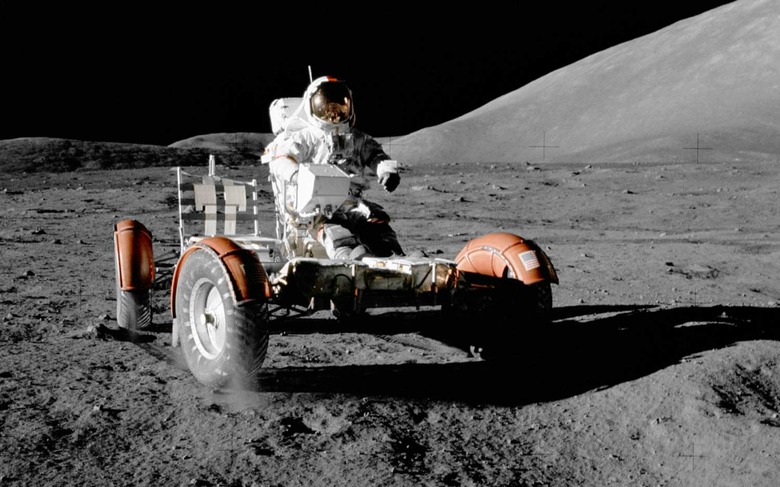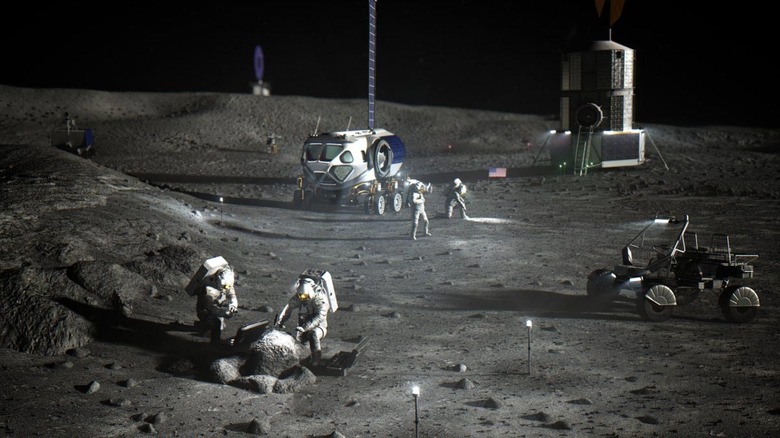GM And Lockheed Martin Are Making A Self-Driving Moon Buggy For NASA
NASA's astronauts need a new Moon ride, and GM and Lockheed Martin are aiming to hand them the keys to not just one but a whole fresh generation of lunar vehicles. The Lunar Terrain Vehicle, or LTV, is the first of a series of electric transportation options which NASA has put the call out for, as it tries to replicate the success of the commercial crew program for a new Moon rover.
It's certainly been a while since NASA upgraded its Moon buggy. Boeing made the first design, used in the Apollo 15, 16, and 17 missions across 1971 and 1972, with a four-wheel design that was designed to travel at up to 8 mph.

The goal was to give astronauts – who would be wearing bulky space suits, thus limiting their mobility on the lunar surface – a way to quickly travel around the Moon complete with equipment and samples. They also acted as mobile videographers, with a front-mounted color camera remotely controlled by NASA. All three remain on the Moon now.
With the NASA Artemis program looking to return astronauts to the Moon's surface, the US space agency has requested proposals for an LTV from private companies. Lockheed Martin plans to lead its team, tapping its history in robotics and spacecraft. General Motors will contribute electric vehicle tech along with autonomous driving systems that will make operating the LTV more straightforward and safer.
It's no small matter, either. Though the Moon can't exactly be described as a traffic jam situation, that didn't stop the existing Moon buggies from getting damaged in use. Two of the three suffered fender damage, with astronauts inadvertently breaking them during moonwalks.
GM previously helped NASA with the Apollo Lunar Roving Vehicle, including developing the chassis and wheels. This time around, though, NASA has far more ambitious plans for the LTV. It'll be used for far greater distances, including taking the astronauts – including the first woman on the Moon – to the South Pole, where the terrain is expected to be considerably more challenging.
"Autonomous, self-driving systems will allow the rovers to prepare for human landings, provide commercial payload services, and enhance the range and utility of scientific payloads and experiments," Lockheed Martin says.

It'll mean NASA can remotely direct the rover to conduct independent experiments, either from the Human Landing System or from the Lunar Gateway which will eventually be in orbit around the Moon. At the same time, though gravity is less of an issue, the LTV design will have to accommodate vast temperature swings. Conditions on the lunar surface can vary from -280 degrees Fahrenheit during the nearly 14 day night, to daytime temperatures of 260 Fahrenheit. Radiation is another consideration, as is the vacuum of space which can make dissipating heat a challenge.
The hope is that not only will Lockheed Martin and GM develop a winning Moon rover design, but that the technology they figure out will have knock-on benefits back on Earth. "Because the operating conditions are so extreme in space, our work on this project will help us make safer and better batteries back on Earth," Madhu Raghavan, Global Research & Development Group Manager at GM, suggests. "The Moon and Mars are, of course, totally unstructured, unlined roads. Designing for that environment will ultimately just make our EV capabilities on Earth that much stronger."
GM plans to launch the first of its vehicles to use the new all-electric Ultium platform under the GMC brand, rebooting the Hummer name for a vast – and expensive – electric SUV.
